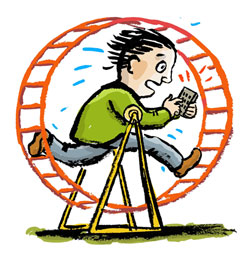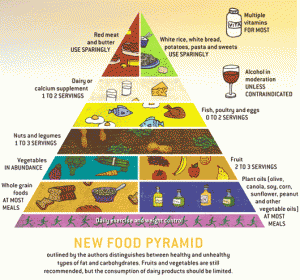This is a great talk by Simon Baron Cohen. He describes how three personality disorders (borderline, narcissistic and anti-social) are fundamentally tied to an inability to empathize with others. Although he does not mention them by name, mirror neurons are thought to play and important role.
Category: Medicine
The Neuroscience of Seeking Behavior

I found this recent article in Slate fascinating. It draws on the research legacy of James Olds, who did some of the seminal experiments with electro-stimulation of the brain. He referred to certain reward centers for basic drives such as hunger and sex. These became known collectively as the “pleasure centers” of the brain.
Fine so far, but could there be other things driving us besides the basics? Apparently so. The article goes on to develop the theory that “Seeking” is an elemental drive on par with drugs, sex and rock ‘n’ roll. This helps explain our attraction to modern tools such as “crackberrys,” Google and Twitter.
Updated Food Pyramid Review

I originally wrote this editorial/review as a handout for patients back in 2004. I’ve updated and republished it here as a public service.
One important issue I did not highlight in my article is the inherent conflict of interest on the part of the USDA. How can the agency that promotes various food industries give unbiased nutritional advice?
Then there is the portion size issue with food labeling…
“A word of caution about food labels… ‘No Trans Fat’ can be a deceptive phrase. Products that contain less than a certain threshold are labeled zero trans fat. The key factor is portion size, which is not standardized and may be unreasonably small when compared with what people actually eat. (When was the last time you counted out twelve potato chips?!) So many popular processed foods have significant amounts of trans fat even though their labels claim they they are trans fat free. You have to read between the lines!”
Bottom line is to evolve your eating habits to increase whole grains, vegetables and healthy oils—while decreasing the amount of processed, fast and “white list” (white bread, pasta, potatoes, etc.) foods. To your health!
FYI, here’s a link to the full article.
